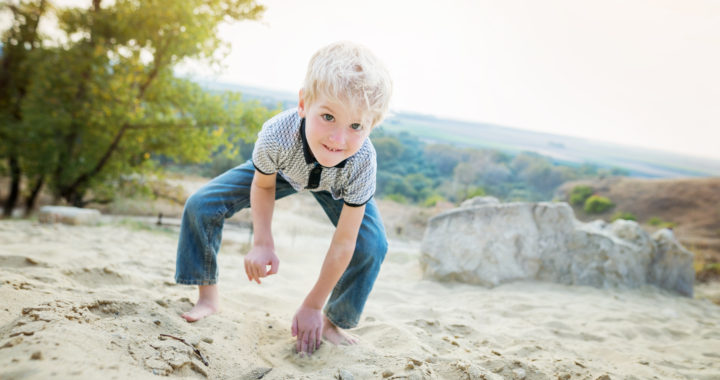While most parents believe that children should have shoes on their feet at all times to avoid any hazards on the ground, studies have shown that no shoes- may be the best shoes. Tracy Byrne, a podiatrist specializing in podopaediatrics, believes that wearing shoes at too young of an age can actually hinder a child’s walking and cerebral development. Walking barefoot develops the muscles and ligaments of the foot, which increases the strength of the foot’s arch, improves spacial awareness, and contributes to good posture. It was noticed that toddlers that walked barefoot, kept their heads up while walking. The feedback they get from the soles of their feet on the ground meant there was less of a need to look down. Looking down throws off their balance and causes them to fall down.
John Woodward, an Alexander Technique teacher and barefoot enthusiast has been noted saying “Shoes were originally created to protect the soles of the feet temporarily when necessary, during our hunter and gathering stages. We’ve come to regard the way we dwell permanently in shoes as normal and natural. It’s anything but.” Research published in the podiatry journal “The Foot” suggests that structural and functional changes can change from the foot having to constantly conform to the shape and constriction of a shoe. This hinders the allowance to develop naturally. The younger the foot, the greater potential there is for damage.
The human foot at birth is nowhere near what an adult foot looks like, on the inside that is. It contains little to no bones and has a mass of cartilage which over time ossifies to become the 28 bones all adult feet have. This process is not complete until late teenage years, so it is crucial that when footwear is to be worn, it should be well chosen. Mike O’Neill, a consultant podiatrist and spokesperson for the Society of Chiropodists and Podiatrists, believes that many parents today treat their children as fashion accessories and choose shoes and clothing based on what is hip and popular, rather then functionality. When looking at a Nike Air shoe made for 3 year olds, there is no bend or give in the shoe. It is completely rigid from heel to toe, which restricts any foot movement that could be happening.
O’Neill has gone on to say “From a functional perspective, shoes shouldn’t be necessary. In fact, there are more likely to be disadvantages and problems from wearing shoes than not wearing them – among them, deformation caused by a poor fit, ingrown toenails, and athlete’s foot. But you have to consider the environment the child is in. Let’s be honest. Do you want your child walking on the streets or in the park barefoot, where there might be dog poo, dirt and possible hazards like glass?”
This niche market has launched a new range of kids ‘barefoot shoes’ to help fill this void. Vivo Barefoot, aims to fill this void while “Children get the health benefits of going barefoot, with the protection of normal shoes.” The shoes range in size from 18 months (when most children begin walking) up to seven years old. These shoes tick all the boxes for ‘good shoes.’ They have a completely flexible sole, a wide and deep toe box (for all that wiggle room), an anatomically correct last (the ‘mould’ that a shoe is built on), a closure at the back and an adjustable closure at the top, such as laces or Velcro.
What about children who have yet to start walking yet? Tracy Byrne believes that shoes at this point are a waste of money. “Crawling is an essential skill to master, but it is very difficult when you are wearing pram shoes or ‘Crawlers.’ Crawling stimulates the brain to develop convergence of vision; people who skip this phase as babies may find it extremely difficult to learn to read and write as children. And in the case of children who crawl backwards to begin with, shoes can put extra pressure on the structures of the foot and leg.”
Thank you to the Guardian for the original information. You can read more here.

